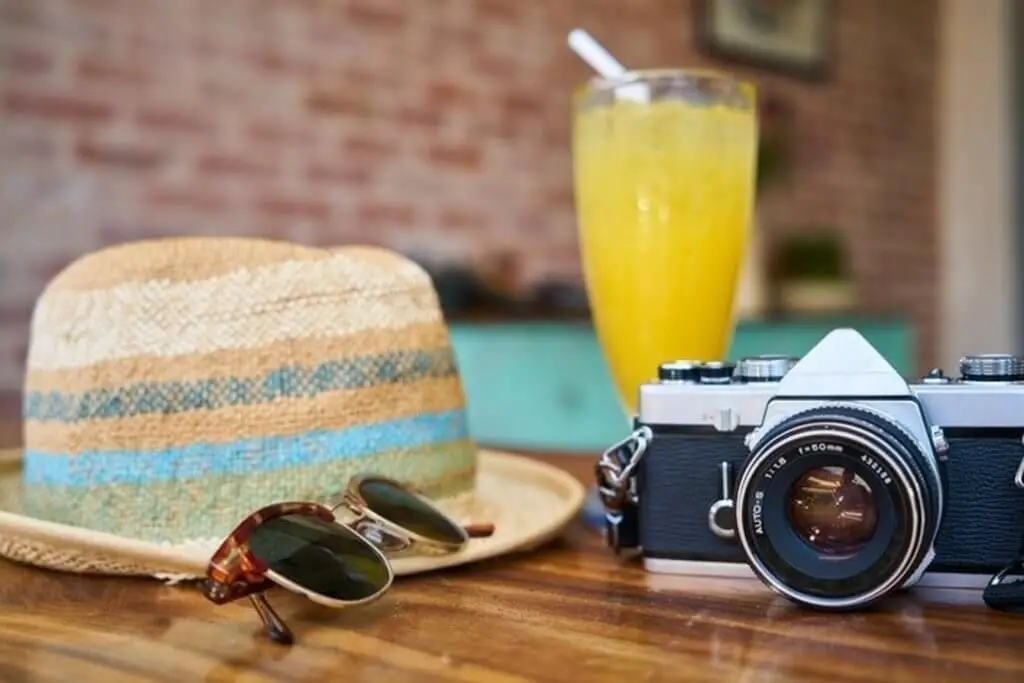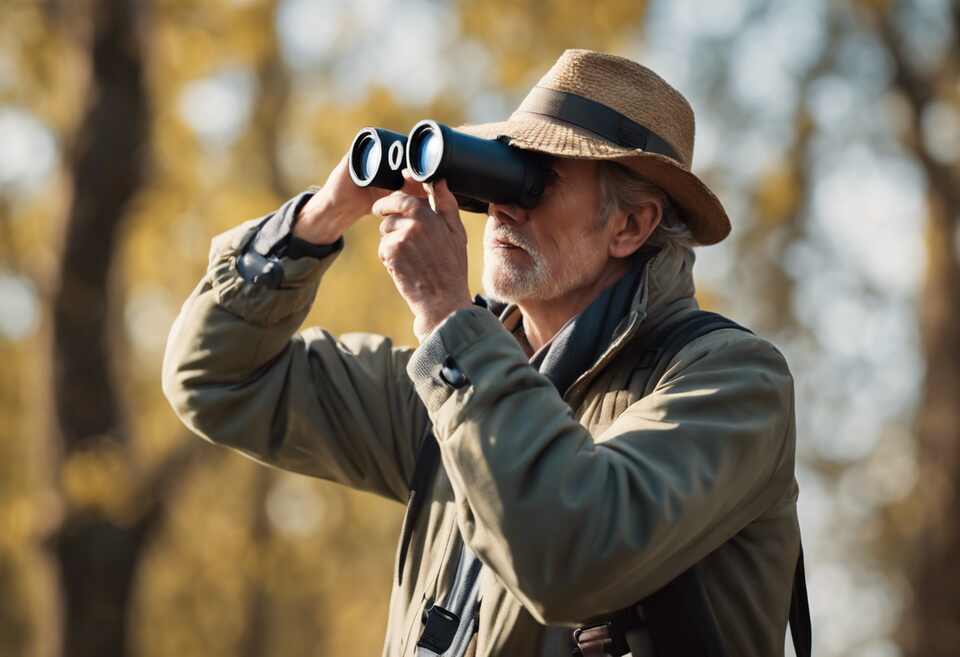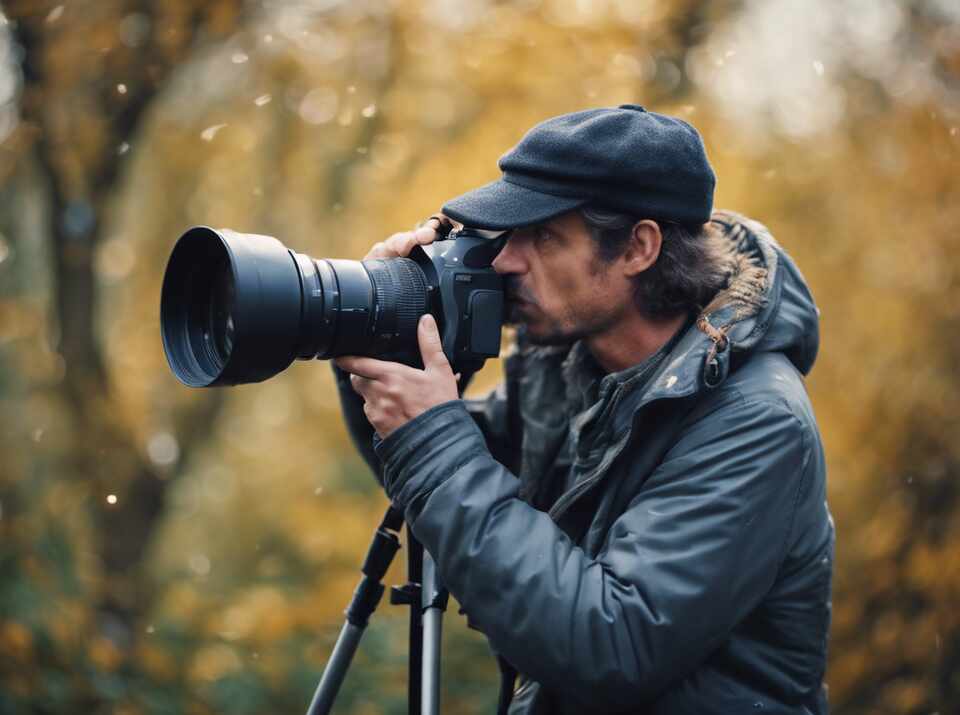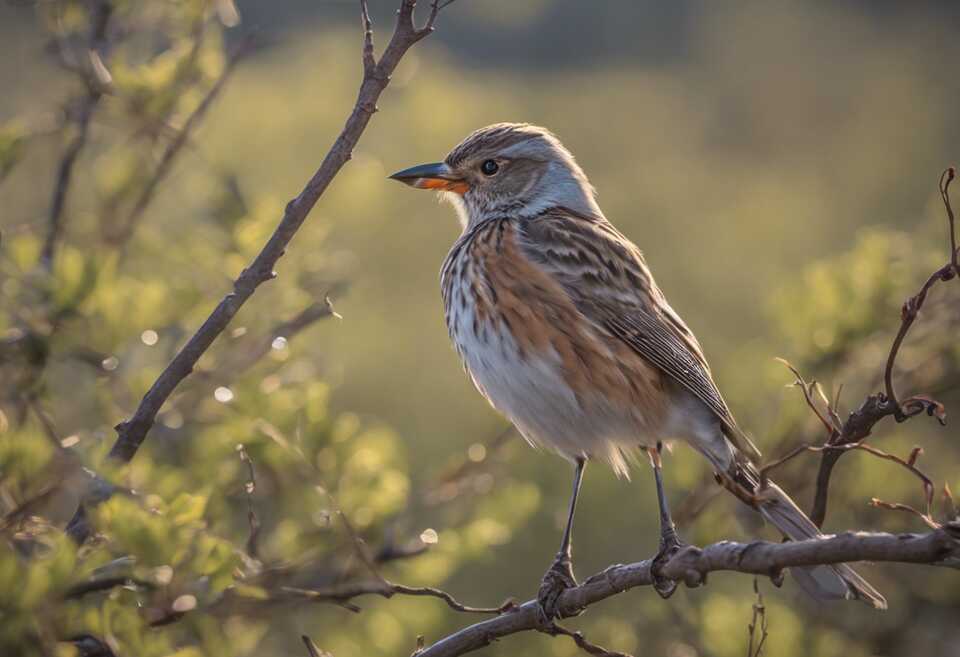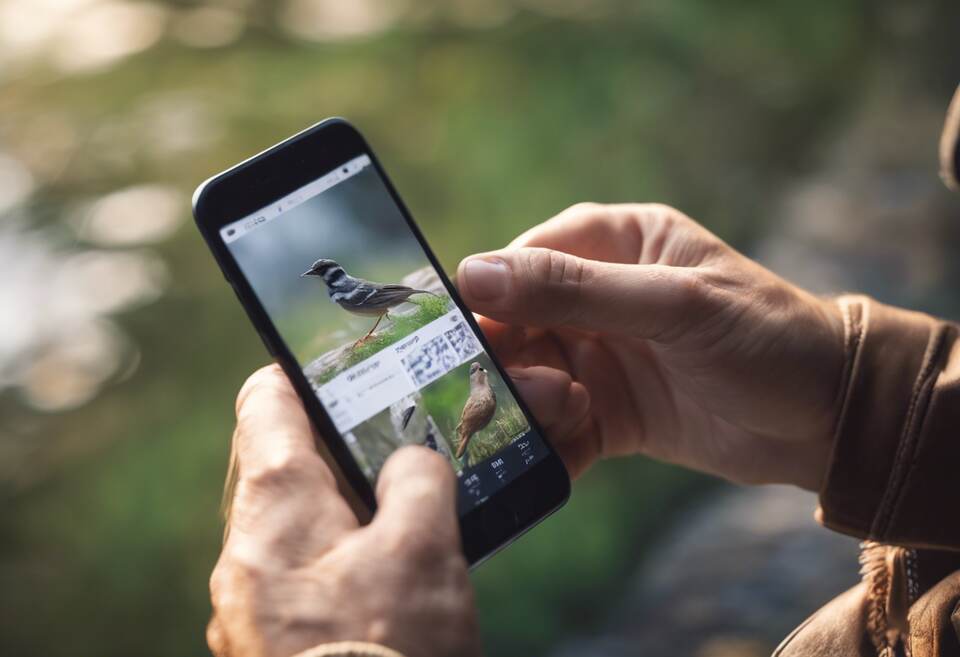Are you are a beginner or even an intermediate birdwatching enthusiast? Are you wondering what equipment do you need for birdwatching?
Then you have come to the right place. This guide will help to know exactly what to look for in quality birdwatching equipment and how to choose it.
Table of Contents
- 1 Key Takeaways
- 2 What Equipment Do You Need For Birdwatching
- 3 Choosing Binoculars
- 4 Camera Gear for Bird Photography
- 5 Headgear Essentials: Finding the Perfect Hat
- 6 Field Guides: Your Bird ID Companion
- 7 Selecting the Right Shoes
- 8 Proper Birdwatching Clothing
- 9 Birding Backpack or Bag
- 10 Note-taking Materials
- 11 Smartphone Apps for Bird Identification
- 12 Optional Accessories for Birdwatching
- 13 Conclusion
- 14 Author
Key Takeaways
- Essential equipment includes binoculars, camera gear, a hat, field guide, proper footwear, and suitable clothing.
- Optional accessories like tripods, spotting scopes, birding apps, field notebooks, lens cleaning kits, and bird feeders can enhance the birdwatching experience.
- Personalize your equipment choices based on your preferences, budget, and birding goals.
What Equipment Do You Need For Birdwatching
Gear up for a successful birdwatching experience with the right equipment. From binoculars and field guides to essential accessories, we’ll guide you through the must-have gear that will enhance your birding excursions and help you spot and identify a wide variety of feathered friends.
Choosing Binoculars
Binoculars are the most essential tool for birdwatching. They allow you to observe birds up close, even from a distance. When choosing binoculars, consider the following factors:
- Magnification: Opt for binoculars with a magnification between 8x and 10x. Higher magnification may result in a narrower field of view and shakier images.
- Objective lens diameter: Look for binoculars with a larger objective lens diameter (around 40-42 mm) as they provide brighter and clearer images, especially in low-light conditions.
- Field of view: A wider field of view allows you to spot birds more easily. Look for binoculars with a wide field of view, typically measured in feet at 1,000 yards.
- Ergonomics and weight: Choose binoculars that feel comfortable in your hands and are lightweight enough for extended use without causing fatigue.
- Quality of optics: Invest in binoculars with high-quality optics to ensure clear, sharp, and color-accurate images.
Consider visiting a store to try out different binocular models, as the comfort and feel can vary from person to person. Remember to take your budget into account, as quality binoculars can range in price.
Discovering a quality pair of binoculars at a reasonable price is easier than you think. Look no further than the Nikon PROSTAFF 7S binocular, a product I highly recommend.
You can conveniently find this exceptional option on Amazon, where it offers great value for birdwatching enthusiasts like you.
With a reliable pair of binoculars, you’ll be able to spot intricate bird details, observe their behavior, and enjoy an immersive birdwatching experience.
Camera Gear for Bird Photography
When it comes to birdwatching, a good pair of binoculars is essential for a successful and enjoyable experience. Here are some key factors to consider when choosing binoculars:
- Magnification: Look for binoculars with moderate magnification, typically in the range of 8x to 10x. Higher magnification can make it challenging to maintain a steady view.
- Objective Lens Diameter: A larger objective lens (measured in millimeters) allows more light to enter, resulting in brighter images. Aim for a diameter between 32 mm to 42 mm, balancing brightness and portability.
- Field of View: Consider the field of view, which determines the width of the area you can see. A wider field of view allows for easier tracking of birds in motion.
- Close Focus: Check the close focus distance, which indicates how close you can focus on nearby birds or details. A shorter close focus distance is beneficial for observing birds at a close range.
- Weight and Comfort: Ensure the binoculars are lightweight and comfortable to hold for extended periods. Consider trying them out or reading reviews to assess their ergonomics.
- Image Quality: Opt for binoculars with high-quality optics that provide sharp, clear, and color-accurate images. Look for features like anti-reflective coatings for improved light transmission.
- Budget: Set a budget that suits your needs, and consider investing in a reputable brand known for producing reliable birdwatching binoculars.
Remember to try different models and assess their performance before making a purchase. Each birder may have different preferences, so choose binoculars that feel comfortable and provide a clear, immersive view of the birding world.
When it comes to cameras for birdwatching, you don’t necessarily need to break the bank. Take it from me – I’m currently using a budget-friendly Canon EOS 2000D that I purchased on Amazon, and it’s been a fantastic choice.
The best part? It comes with an accessory bundle, including a tripod, bag, lenses, and more, providing everything I need to capture those incredible avian moments without spending a fortune.
Headgear Essentials: Finding the Perfect Hat
When it comes to birdwatching, a suitable hat is more than just a fashion statement – it’s a practical and essential accessory. Here’s what you need to know to find the perfect hat for your birdwatching adventures:
- Sun Protection: Look for a hat with a wide brim that provides ample shade for your face, neck, and ears. This helps shield you from the sun’s harmful rays during long hours spent outdoors.
- Breathable and Lightweight: Opt for hats made from breathable materials like cotton or lightweight synthetic fabrics. These materials allow air circulation, keeping your head cool and comfortable even in warm weather.
- Adjustable and Secure Fit: Choose a hat with an adjustable strap or drawstring to ensure a snug fit. This helps keep the hat in place during windy conditions or when you’re actively moving around.
- Neutral Colors: Consider hats in neutral colors like khaki, beige, or olive green. These colors are less likely to attract attention from birds and allow you to blend in with your surroundings, increasing your chances of observing birds up close.
- Functional Design: Look for hats with additional features like a chin strap, ventilation holes, or a mesh crown for added functionality and comfort.
Remember, finding the perfect hat is not only about style, but also about practicality and protection. A well-chosen hat will keep you comfortable, shielded from the sun, and help you maintain a low profile while observing birds in their natural habitat.
So, put on your hat and get ready to embark on memorable birdwatching adventures with confidence and style. Check out this cool birdwatching hat available on Amazon.
Field Guides: Your Bird ID Companion
Field guides are an essential tool for birdwatchers, serving as a comprehensive reference for identifying different bird species. These portable books provide detailed information about various birds, including their physical characteristics, behavior, habitats, and geographical distribution.
When selecting a field guide, consider the following factors:
- Region-specific: Choose a field guide that covers the bird species found in your specific region or the area you plan to visit. Regional guides provide more accurate and relevant information for your birdwatching adventures.
- Illustrations or Photographs: Field guides typically feature either illustrations or photographs of birds. Both options have their advantages. Illustrations may highlight key distinguishing features, while photographs offer a realistic depiction of the birds in their natural settings. Choose the style that resonates with you and enhances your identification process.
- Size and Portability: Opt for a field guide that is compact and lightweight, making it easy to carry during your birdwatching outings. Look for a size that fits comfortably in your pocket or backpack without weighing you down.
- User-Friendly Layout: A well-organized field guide should have an intuitive layout, with birds grouped logically by families, similar features, or color patterns. Clear and concise descriptions, maps, and habitat information are also helpful for quick and accurate identification.
Make the most of your field guide by familiarizing yourself with its contents and learning how to navigate through the pages efficiently. Pay attention to the introductory sections that explain terminology, bird anatomy, and the guide’s specific organization.
Remember, field guides are valuable references, but practice and experience are essential for becoming a skilled bird identifier. So, grab your field guide, venture into nature, and let it be your trusted companion on your exciting birdwatching journeys.
A must-have companion for any birder is the National Geographic field guide, available on Amazon. This comprehensive guide boasts over 1000 North American bird species, complete with detailed maps and illustrations.
Whether you’re a beginner or an experienced birder, this invaluable resource will enrich your birdwatching adventures and help you identify a wide range of avian species.
Check out these articles:
Selecting the Right Shoes
Choosing the appropriate footwear is crucial for comfortable and safe birdwatching adventures. Consider the following factors when selecting the right shoes for the field:
- Comfort and Support: Look for shoes that offer cushioning and arch support to keep your feet comfortable during long walks and hikes. Opt for a snug fit without being too tight or restrictive.
- Traction and Grip: The outsole should have good traction to provide stability on various terrains, including wet or slippery surfaces. Rubber soles with deep treads or patterns offer better grip.
- Waterproof or Water-Resistant: Depending on your birdwatching environment, consider shoes that are waterproof or water-resistant to keep your feet dry during wet conditions or when crossing streams.
- Breathability: Shoes with breathable materials like mesh panels or ventilation ports allow airflow, reducing sweat and keeping your feet cool and dry in warmer weather.
- Ankle Support: If you plan to hike or walk on uneven terrain, consider shoes with ankle support to help prevent injuries and provide stability.
- Lightweight and Flexible: Opt for lightweight shoes that allow for natural foot movement. This reduces fatigue during long walks and provides better agility when navigating different habitats.
- Consider Seasonal Needs: In colder weather, insulated or warm-lined shoes are recommended, while in hot weather, shoes with breathable fabrics are preferable.
- Break-In Period: If purchasing new shoes, allow time for a proper break-in period before embarking on longer birdwatching excursions to avoid discomfort or blisters.
Remember, the right shoes can make a significant difference in your birdwatching experience, providing comfort, protection, and stability as you explore the natural world. Choose footwear that suits your specific needs and the environmental conditions you anticipate encountering.
Check out the Best Shoes For Birding (Keep Your Feet Happy!)
Proper Birdwatching Clothing
When it comes to birdwatching, choosing the right clothing can greatly enhance your comfort and overall experience. Here are some essential tips for dressing appropriately:
- Layer Up: Opt for a layered clothing approach that allows you to adjust your outfit as needed. This is particularly important during early morning outings or in changing weather conditions.
- Earth Tones: Wear clothing in earthy and muted colors, such as greens, browns, and grays. These colors blend well with natural surroundings and help you remain inconspicuous to avoid startling the birds.
- Comfortable and Lightweight: Choose lightweight and breathable fabrics that allow for ease of movement and comfort during long hours of observation. Avoid noisy fabrics that can startle the birds.
- Hat and Sunglasses: Protect yourself from the sun’s glare and stay focused by wearing a wide-brimmed hat and sunglasses. These accessories also provide shade and reduce eye strain.
- Insect Repellent: Apply insect repellent to ward off pesky bugs that can distract you from birdwatching. Opt for a repellent that is safe for both you and the environment.
- Camouflage or Neutral Outerwear: Consider a camouflage or neutral-colored outerwear piece, such as a lightweight jacket or vest, to blend in with the surroundings and further minimize disturbance.
- Comfortable Shoes: Opt for comfortable and supportive shoes suitable for walking on various terrains. Choose footwear that is waterproof or water-resistant if you anticipate encountering wet or muddy conditions.
Remember, dressing appropriately for birdwatching allows you to blend in with nature, stay comfortable during extended periods of observation, and minimize disturbance to the birds.
With the right clothing, you’ll be ready to immerse yourself fully in the avian world and enjoy a successful birdwatching experience. Check out the Best Birding Vests (Tried & Tested For You!)
Birding Backpack or Bag
A birding backpack or bag is an essential item for any avid birdwatcher. It allows you to conveniently carry all your birding gear while keeping it organized and easily accessible. Here are some key considerations when selecting a birding backpack or bag:
- Size and Capacity: Look for a backpack or bag that offers enough space to accommodate your equipment, including binoculars, camera, field guides, note-taking materials, and other essentials. Consider the number of pockets, compartments, and dividers available to help keep your gear organized.
- Comfort and Ergonomics: Opt for a backpack or bag with padded shoulder straps and a supportive back panel to ensure comfort during long birding excursions. Adjustable straps and a waist belt can help distribute the weight evenly and reduce strain on your shoulders and back.
- Durability and Weather Resistance: Choose a backpack or bag made from sturdy, water-resistant materials to protect your gear from the elements. Look for reinforced stitching, strong zippers, and additional features like a rain cover to safeguard your equipment in unpredictable weather conditions.
- Accessibility and Quick Access Pockets: Consider a backpack or bag with easy-to-access pockets or compartments designed specifically for items you need to grab quickly, such as your binoculars or field guide. This saves time and allows you to react swiftly to bird sightings.
- Additional Features: Some birding backpacks or bags may offer extra features such as attachment points for tripods, water bottle holders, or even integrated hydration systems. Assess your personal needs and preferences to determine which additional features would enhance your birdwatching experience.
Investing in a quality birding backpack or bag ensures that your equipment remains safe, organized, and readily available during your birdwatching adventures.
With the right backpack or bag, you can focus on the joy of birding while having all your essential gear conveniently at hand.
Note-taking Materials
When it comes to birdwatching, having the right note-taking materials can greatly enhance your experience and help you record valuable observations. Here are some essential items to consider:
- Notebook or Field Journal: A dedicated notebook or field journal is indispensable for documenting your bird sightings, noting down behavioral observations, sketching details, and jotting down important details. Click Here To Get Your Own FREE Printable Bird Watching Journal PDF
- Pens and Pencils: Make sure to carry a couple of reliable pens and pencils for writing in your notebook. Opt for waterproof or weather-resistant options to ensure your notes don’t smudge or fade in case of unexpected weather conditions.
- Field Guides or Checklist: Alongside your note-taking materials, it’s helpful to have a field guide or bird checklist for quick reference. These resources provide information on bird species, their habitats, and identifying features, aiding in accurate identification and detailed documentation.
- Camera or Smartphone: While not strictly note-taking materials, having a camera or smartphone with you allows you to capture high-quality photos or videos of birds. Visual documentation can supplement your written notes and provide additional details for later analysis or sharing with fellow bird enthusiasts.
Remember, effective note-taking helps you build a comprehensive record of your birdwatching adventures, contributes to citizen science initiatives, and assists in personal learning and enjoyment.
Find a system that works best for you, and be consistent in recording your observations to create a valuable resource of avian encounters.
Smartphone Apps for Bird Identification
Smartphone apps have revolutionized the way birdwatchers identify and learn about birds. With just a few taps on your phone, you can access a vast library of bird species, their calls, and detailed information. Here are some popular smartphone apps for bird identification:
- Merlin Bird ID: Developed by the Cornell Lab of Ornithology, Merlin Bird ID is an excellent app for beginners and experienced birdwatchers alike. It uses artificial intelligence to identify birds based on your description or uploaded photos.
- Audubon Bird Guide: The Audubon Bird Guide app offers a comprehensive database of bird species, including photos, range maps, and detailed descriptions. It also provides information on bird behavior, habitat, and conservation status.
- eBird: More than just an identification app, eBird allows you to record and submit your bird sightings to contribute to citizen science efforts. It offers real-time bird sightings, species checklists, and personalized birding hotspots based on your location.
- BirdNET: BirdNET utilizes cutting-edge machine learning technology to identify bird species by their vocalizations. Simply record a bird’s song or call and let the app analyze and provide potential matches.
- iBird: iBird offers an extensive database of bird species, including illustrations, photos, and detailed information on their behavior, habitat, and identification features. It also includes powerful search functions and customizable field marks to aid in bird identification.
These smartphone apps serve as valuable tools for birdwatchers, providing instant access to bird identification, calls, and other useful information.
Downloading one or more of these apps can greatly enhance your birdwatching experience and deepen your knowledge of avian species.
Optional Accessories for Birdwatching
While the essentials of birdwatching equipment are crucial, there are optional accessories that can further enhance your birdwatching experience. Consider these additional tools and accessories to elevate your observations and make the most out of your birding adventures:
- Tripod or Monopod: Stability is key for capturing steady images or prolonged observations. A tripod or monopod can provide the necessary support for your camera or binoculars, reducing hand fatigue and allowing for sharper images and extended viewing.
- Spotting Scope: A spotting scope is a high-powered magnification tool that offers more detailed views of distant birds. Ideal for birders who want to study bird behavior, plumage details, or observe birds in specific habitats.
- Birding Apps: Take advantage of birding apps on your smartphone or tablet. These apps provide instant access to bird identification guides, bird songs and calls, and real-time bird sightings reported by fellow birders in your area.
- Field Notebook and Pen: Keep a dedicated field notebook to record your bird observations, including species, behavior, and habitat details. Jotting down notes can help with identification, tracking migration patterns, and creating a personal birding journal.
- Lens Cleaning Kit: Keep your optical equipment in pristine condition by carrying a lens cleaning kit. Dust, dirt, and smudges can affect image clarity, so having cleaning tools handy ensures that you can maintain optimal viewing conditions.
- Bird Feeder and Food: Setting up a bird feeder in your backyard can attract a variety of bird species for closer observations. Research the types of bird feeders and appropriate food for different species, and enjoy the beauty of birds right from your window.
Remember, these accessories are optional, but they can enhance your birdwatching experience and provide added convenience and opportunities for discovery.
Choose the accessories that align with your birding goals and preferences, and get ready to take your birdwatching adventures to new heights.
Conclusion
In conclusion, having the right equipment is essential for a rewarding birdwatching experience.
Binoculars, field guides, proper clothing, and optional accessories like tripods and birding apps can elevate your birding adventures and increase your chances of successful bird observations.
Invest in quality gear that suits your needs, and embark on your birdwatching journeys fully equipped to explore the fascinating world of birds with confidence and joy.

